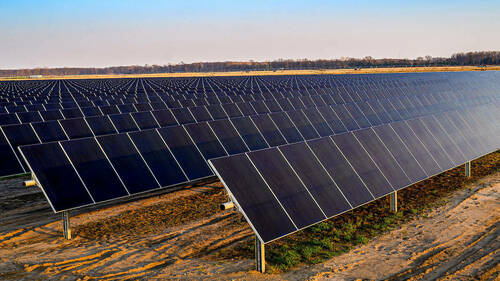
The University of Notre Dame has joined the Environmental Protection Agency’s Green Power Partnership program for organizations whose actions help to advance the use and development of new and existing sources of green energy.
The EPA established the Green Power Partnership program in 2001 as a way to encourage organizations to use green energy, including wind, solar, hydro and geothermal, and to protect human health and the environment.
The program has five goals:
- Advance the American market for green power.
- Encourage the development of new U.S.-based renewable electricity sources.
- Reduce air emissions and pollution.
- Recognize leadership and impact in green power use.
- Support basic market principles and practices that serve all U.S. electricity customers.
“We are proud to be recognized by the U.S. Environmental Protection Agency as a Green Power partner,” said Paul Kempf, assistant vice president for utilities and maintenance at Notre Dame. “Using green power is a key contributor to carbon reductions for the University as it continues working towards the goal of becoming a net-neutral campus by 2050.”
Consistent with its Catholic values and mission, as well as the pope’s encyclical on climate change, Notre Dame has made a series of investments in clean energy over the past several decades, with the aim of meeting specific climate goals.
Notably, the University partnered with Indiana Michigan Power to develop a 210-acre solar farm in St. Joseph County in 2021, and will activate a new hydro facility on the St. Joseph River in downtown South Bend later this year.
The solar facility meets about 10 percent of the University’s overall electricity needs in the form of clean energy credits. The hydro facility will account for another 7 percent. Combined, the two projects will offset more than 10,000 pounds of carbon dioxide annually.
The University also maintains one solar array each atop Fitzpatrick and Stinson-Remick halls and next to a University-owned storage facility in South Bend, as well as a geothermal heating and cooling plant on the east side of campus for Dunne, Flaherty and McCourtney halls. And it partners with a local dairy to convert food waste from catering and dining operations to clean, renewable energy.
The University stopped burning coal in 2019, a year ahead of schedule.
The University’s green power use is equivalent to the electricity use of more than 1,000 average American homes annually, according to the EPA, not accounting for the soon-to-be-completed hydro facility.
And that’s just on the generation side.
The University also works to conserve energy through ongoing investments in green infrastructure, with a commitment to LEED certification of all new buildings on campus, and by encouraging and incentivizing the campus community to be more mindful of electricity use.
Caitlin Jacobs is the sustainability program manager in the Office of Sustainability at Notre Dame, where, among other things, she is responsible for efforts to measure and reduce the University’s greenhouse gas inventory and contribute to progress on key regional climate concerns.
“We are grateful to join this community of practice as we work together to build a more just and sustainable future,” Jacobs said of the Green Power Partnership. “The EPA provides a wellspring of educational and community-oriented resources, which strengthen our ability to care for our common home.”
As of 2020, more than 700 organizations were part of the Green Power Program, accounting for some 70 billion kilowatt-hours of green power annually. These include a variety of leading Fortune 500 companies, as well as small- and medium-sized businesses; local, state and federal governments; and colleges for universities.
For more on Notre Dame’s overall sustainability strategy, visit green.nd.edu.